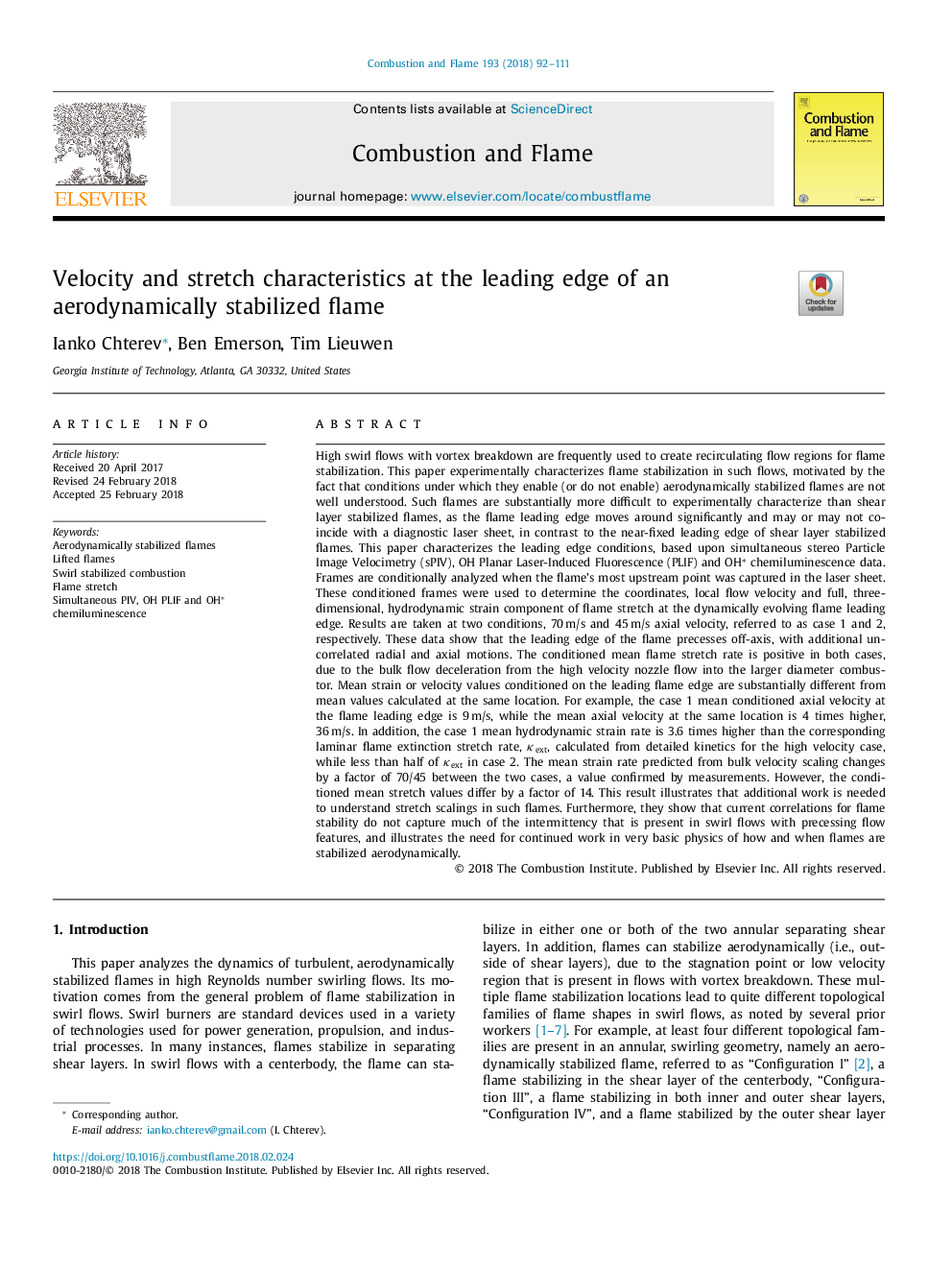| کد مقاله | کد نشریه | سال انتشار | مقاله انگلیسی | نسخه تمام متن |
|---|---|---|---|---|
| 6593548 | 1423544 | 2018 | 20 صفحه PDF | دانلود رایگان |
عنوان انگلیسی مقاله ISI
Velocity and stretch characteristics at the leading edge of an aerodynamically stabilized flame
ترجمه فارسی عنوان
سرعت و ویژگی کشش در لبه جلو یک شعله تثبیت شده با آئروژینامیک
دانلود مقاله + سفارش ترجمه
دانلود مقاله ISI انگلیسی
رایگان برای ایرانیان
موضوعات مرتبط
مهندسی و علوم پایه
مهندسی شیمی
مهندسی شیمی (عمومی)
چکیده انگلیسی
High swirl flows with vortex breakdown are frequently used to create recirculating flow regions for flame stabilization. This paper experimentally characterizes flame stabilization in such flows, motivated by the fact that conditions under which they enable (or do not enable) aerodynamically stabilized flames are not well understood. Such flames are substantially more difficult to experimentally characterize than shear layer stabilized flames, as the flame leading edge moves around significantly and may or may not coincide with a diagnostic laser sheet, in contrast to the near-fixed leading edge of shear layer stabilized flames. This paper characterizes the leading edge conditions, based upon simultaneous stereo Particle Image Velocimetry (sPIV), OH Planar Laser-Induced Fluorescence (PLIF) and OH* chemiluminescence data. Frames are conditionally analyzed when the flame's most upstream point was captured in the laser sheet. These conditioned frames were used to determine the coordinates, local flow velocity and full, three-dimensional, hydrodynamic strain component of flame stretch at the dynamically evolving flame leading edge. Results are taken at two conditions, 70â¯m/s and 45â¯m/s axial velocity, referred to as case 1 and 2, respectively. These data show that the leading edge of the flame precesses off-axis, with additional uncorrelated radial and axial motions. The conditioned mean flame stretch rate is positive in both cases, due to the bulk flow deceleration from the high velocity nozzle flow into the larger diameter combustor. Mean strain or velocity values conditioned on the leading flame edge are substantially different from mean values calculated at the same location. For example, the case 1 mean conditioned axial velocity at the flame leading edge is 9â¯m/s, while the mean axial velocity at the same location is 4 times higher, 36â¯m/s. In addition, the case 1 mean hydrodynamic strain rate is 3.6 times higher than the corresponding laminar flame extinction stretch rate, κext, calculated from detailed kinetics for the high velocity case, while less than half of κext in case 2. The mean strain rate predicted from bulk velocity scaling changes by a factor of 70/45 between the two cases, a value confirmed by measurements. However, the conditioned mean stretch values differ by a factor of 14. This result illustrates that additional work is needed to understand stretch scalings in such flames. Furthermore, they show that current correlations for flame stability do not capture much of the intermittency that is present in swirl flows with precessing flow features, and illustrates the need for continued work in very basic physics of how and when flames are stabilized aerodynamically.
ناشر
Database: Elsevier - ScienceDirect (ساینس دایرکت)
Journal: Combustion and Flame - Volume 193, July 2018, Pages 92-111
Journal: Combustion and Flame - Volume 193, July 2018, Pages 92-111
نویسندگان
Ianko Chterev, Ben Emerson, Tim Lieuwen,
